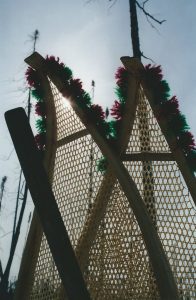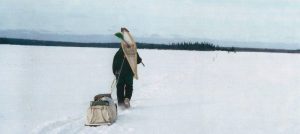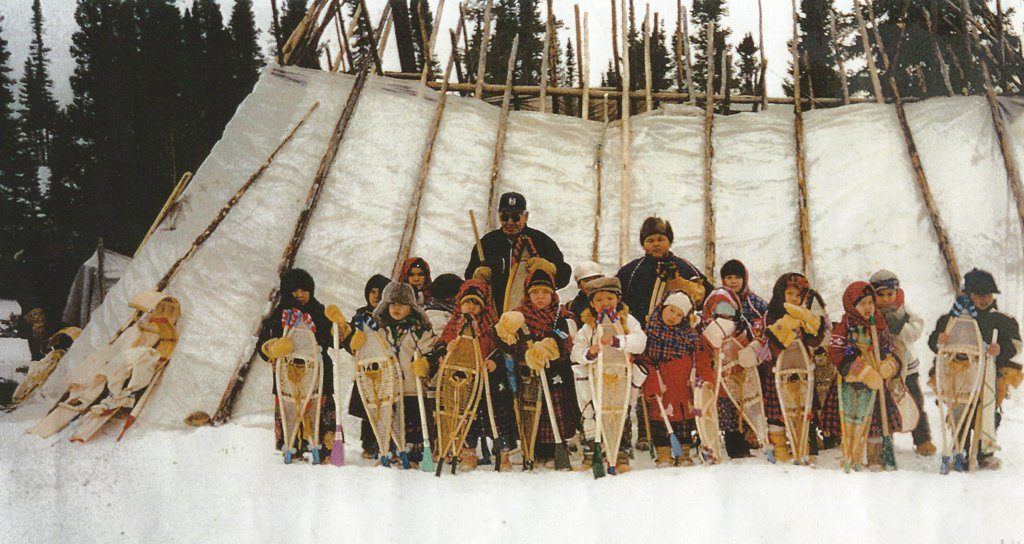Only Their Legs and Their Snowshoes
John Matches made a pair of snowshoes for his grandson using wood that he found on an island out in the Bay. They were designed for Stacy’s height and weight at the time. John wasn’t strong enough to complete them, so Stacy helped to string them. My snowshoes have history, he says, and there’s more to the story. Stacy heard his grandfather singing in Cree as he shaped the ᐊᓵᒥᒡ (asaamich snowshoes). He doesn’t remember the song, but what he does remember, is that the first time you walk on new snowshoes, you travel east making a circle. John told him you follow the path of the sun on that walk and it should be the first snow of the year. Then you will find big game.
“Back in the old days, people only used their snowshoes and their legs. Pulling our sled used to tire us out. It’s really easy going out today, it’s like I don’t really do anything since I started using the ski-doo.” Isaac Visitor 1996.
In winter, you need snowshoes off-road because the snow gets very deep. Wemindji snowshoes are long and narrow with an upturned toe, designed for long journeys through open forest and across muskeg and lakes where snow can be powdery on the surface but slushy deeper down. Each community makes a recognizably different shape. The frame is made from thin strips of tamarack or birch, which have been soaked, then shaped, dried and strung. Once finished, they may be decorated with paint and brightly coloured pom-poms.
A child’s first snowshoe walk is celebrated with ceremony similar to that of the Walking Out.




